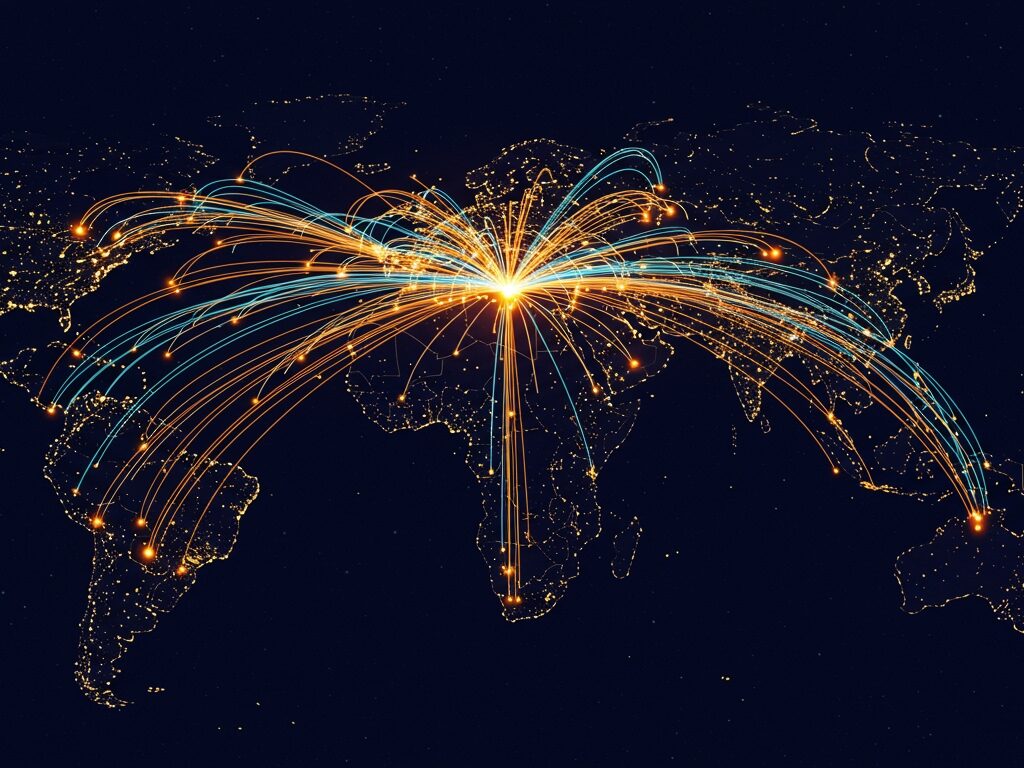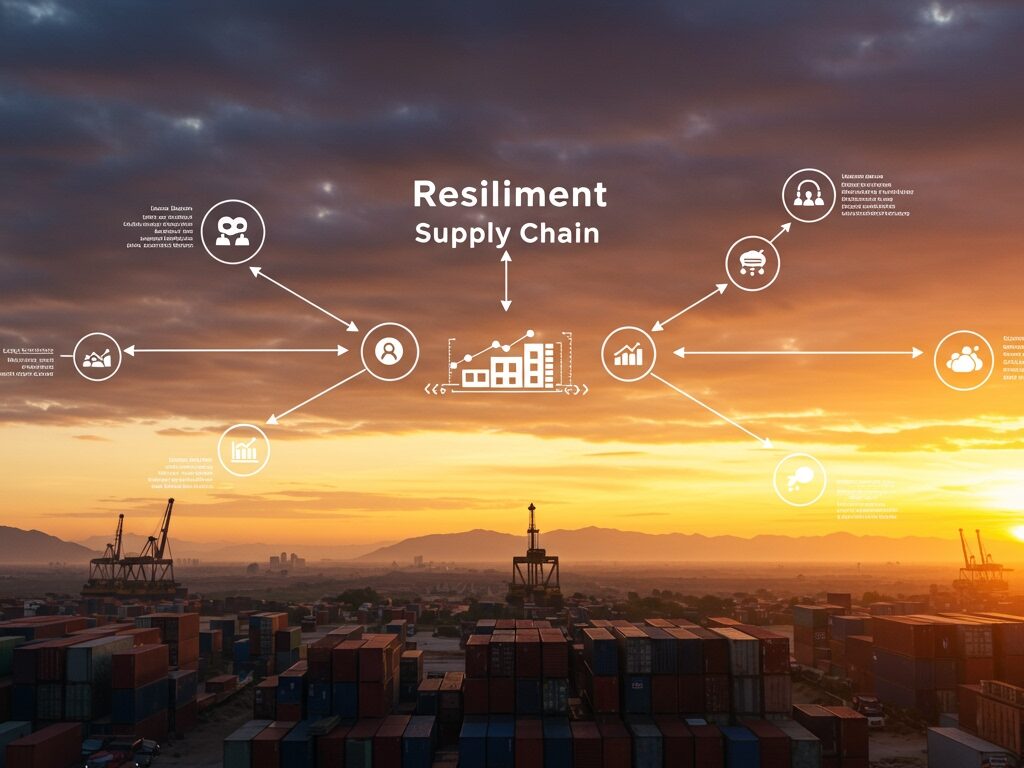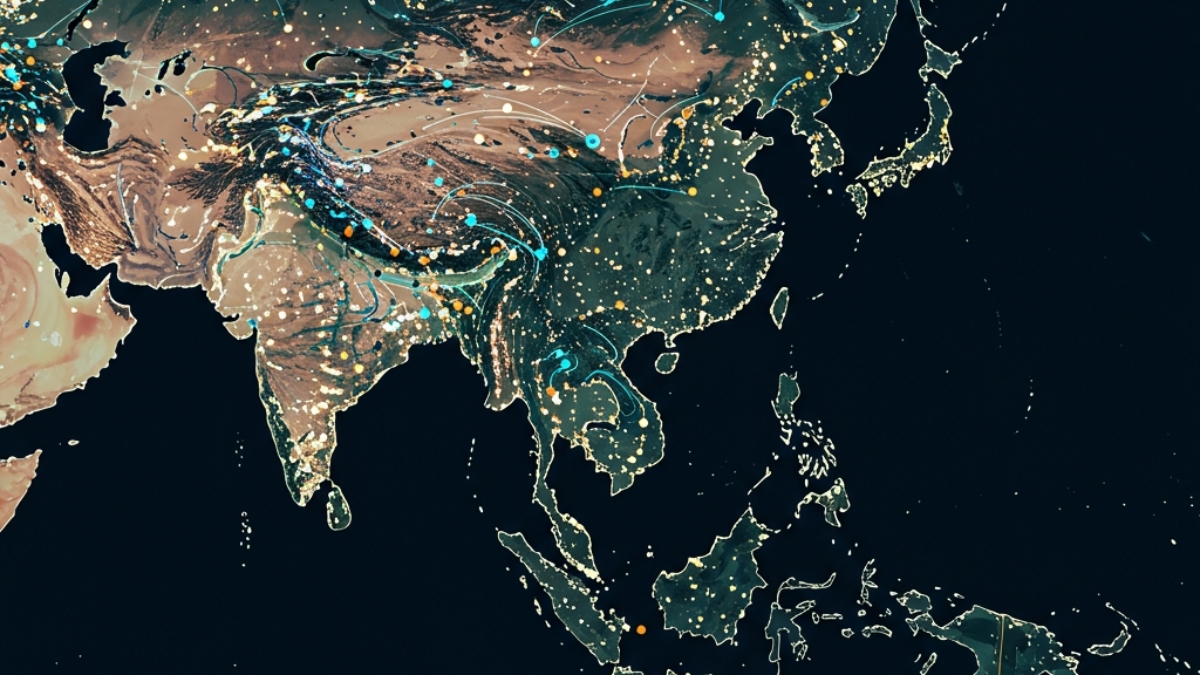The global economic landscape is undergoing a profound transformation. For decades, the “China +1” strategy served as a primary playbook for businesses seeking manufacturing efficiencies. It involved complementing China-centric production with an additional base to mitigate risks. However, as 2025 approaches, this approach is evolving. Companies are now looking beyond a single alternative, embracing multi-node supply networks for deeper resilience and broader diversification across Asia.
This strategic shift is not merely a trend; it is a fundamental re-evaluation of global sourcing and manufacturing. Geopolitical tensions, rising operational costs, and lessons learned from recent disruptions are driving a complex remapping of supply routes across the continent. Businesses are no longer just hedging bets; they are proactively constructing more agile and robust supply ecosystems.
Key Takeaways:
- The “China +1” strategy is expanding into a “multi-node” or “Asia +1” approach for enhanced resilience.
- Geopolitical shifts, cost pressures, and the need for deeper risk mitigation are key drivers.
- Vietnam, India, Thailand, and Malaysia are emerging as primary beneficiaries and critical manufacturing hubs.
- Advanced technologies like AI, IoT, and blockchain are central to building future-proof supply chains.
- Challenges include infrastructure gaps, skilled labor shortages, and complex regulatory environments in new locations.
Evolving Beyond “China +1”: Why Now?
The original “China +1” concept emerged to address growing concerns about over-reliance on a single manufacturing giant. It provided a simple solution for risk mitigation. Yet, the past few years have exposed new vulnerabilities. Factors compelling businesses to seek more comprehensive diversification include:
- Geopolitical Realignment: Escalating trade tensions, particularly between the U.S. and China, and regional disputes in areas like the South China Sea, have underscored the fragility of concentrated supply chains. Tariffs and export restrictions increase costs and uncertainty.
- Rising Costs in China: Labor costs in China have steadily climbed, eroding its competitive advantage as a low-cost manufacturing base for many industries. This prompts companies to explore more cost-effective alternatives.
- Pandemic-Induced Disruptions: The COVID-19 pandemic highlighted the critical need for supply chain visibility and agility. Factory shutdowns and logistical bottlenecks caused significant global ripple effects, pushing companies to build in redundancies.
- Sustainability and ESG Imperatives: Growing emphasis on Environmental, Social, and Governance (ESG) factors means companies are scrutinizing their supply chains for ethical labor practices, environmental impact, and responsible sourcing.

New Horizons: Asia’s Emerging Supply Chain Hubs
As companies move beyond a singular “plus one” approach, several Asian nations are stepping up as attractive alternatives and complementary hubs. These countries offer a compelling mix of competitive labor costs, improving infrastructure, and supportive government policies.
Southeast Asia: The ASEAN Advantage
The Association of Southeast Asian Nations (ASEAN) bloc is a major beneficiary of this diversification drive. Its strategic location, growing economies, and increasing regional integration make it highly appealing.
- Vietnam: Consistently ranks high as a preferred destination for electronics, textiles, and light manufacturing. Its robust participation in free trade agreements and improving infrastructure are key drawcards.
- Thailand: A well-established manufacturing base, particularly strong in automotive and electronics, with strategic initiatives like the Eastern Economic Corridor (EEC) attracting advanced industries.
- Malaysia: Excels in electronics and electrical (E&E) manufacturing, semiconductors, and high-value components. It offers strong intellectual property protection and advanced infrastructure.
- Indonesia: With a large domestic market and efforts to develop its manufacturing sector, especially in electric vehicles, Indonesia is gaining traction.
- Philippines: Positioned strategically along major sea routes, the Philippines is also seeing increased attention for its role in diversified supply chains.
- Singapore: While not a low-cost option, Singapore is a hub for high-value manufacturing, R&D, and advanced technologies like biomedical sciences and precision engineering.
India: A Rising Manufacturing Powerhouse
India is rapidly emerging as a significant player in the global manufacturing landscape. Its massive domestic market, large skilled workforce, and government initiatives like “Make in India” are attracting substantial foreign investment. India’s improving logistics infrastructure and extensive network of free trade agreements further enhance its appeal.
Strategies for Building Resilient Supply Chains in 2025
Moving beyond geographical diversification, companies are adopting multifaceted strategies to build true resilience. This involves leveraging technology, embracing new operational models, and fostering collaboration.
- Enhanced Visibility and Digitalization: End-to-end supply chain visibility is paramount. Digital platforms, cloud computing, and advanced analytics allow companies to monitor operations in real-time, anticipate disruptions, and make informed decisions.
- AI and Automation: Artificial Intelligence (AI) and Machine Learning (ML) are revolutionizing supply chain management. They optimize inventory, improve demand forecasting, streamline logistics, and enhance predictive risk management. Automation in warehouses and production facilities boosts efficiency and reduces labor dependency.
- “Friendshoring” and “Nearshoring”: Beyond cost, strategic alignment with geopolitically stable regions and closer proximity to key markets (e.g., Mexico for North America) are becoming critical considerations. This often involves relocating production to allied nations or closer geographic areas.
- Multi-Sourcing and Dual Supply Chains: Instead of a single “plus one,” businesses are creating parallel or dual supply chains to serve different markets or to provide fail-safes against disruptions. This can involve sourcing components from multiple regions.
- Regional Integration and Cooperation: Initiatives like the ASEAN Economic Community (AEC) and the Digital Economy Framework Agreement (DEFA) are crucial. They aim to harmonize customs procedures, streamline digital payments, and improve connectivity, fostering more robust intra-regional trade.
Navigating the Challenges Ahead
While the benefits of diversification are clear, the transition is not without hurdles. Companies must carefully consider various challenges when relocating or expanding their supply chains in Asia:
- Infrastructure Deficiencies: Many emerging hubs still lag behind China in terms of port capacity, road networks, and overall logistics infrastructure. Significant investment is needed.
- Skilled Labor Gaps: Although labor costs may be lower, the availability of highly skilled workers, particularly in high-tech manufacturing, can be a concern. Investment in training and development programs is often necessary.
- Regulatory Complexities: Navigating diverse regulatory environments, varying trade policies, and customs procedures across multiple countries can be complex and time-consuming.
- Supply Chain Dependency: Even with diversification, many emerging hubs still rely on China for critical intermediary goods and components, creating a “tariff workaround” rather than full independence.
- Intellectual Property Protection: Ensuring robust IP protection in new manufacturing locations remains a key concern for businesses.
Overcoming these challenges requires meticulous planning, strategic partnerships, and often, government support. Businesses need to conduct thorough risk assessments and financial planning before committing to new locations. For more insights on global economic shifts, consider resources like the World Economic Forum.
The Road Ahead for Asia’s Supply Chains in 2025 and Beyond
By 2025, Asia’s supply chain landscape will be significantly different from a decade prior. The era of hyper-concentration is giving way to a more distributed, resilient model. This evolution is driven by a necessity to adapt to a world marked by greater unpredictability and geopolitical flux.
The shift towards diversified, technologically advanced, and regionally integrated supply chains will not only enhance stability but also unlock new avenues for growth. It encourages innovation, fosters regional economic development, and ultimately creates more robust global trade networks. Businesses that proactively embrace these changes will be best positioned to thrive in the complex global economy of the future. Read more about optimizing supply chains.

Frequently Asked Questions (FAQs)
What does “China +1” mean in supply chain management? The “China +1” strategy refers to a business approach where companies diversify their manufacturing or sourcing operations by adding at least one additional country to their existing China-based operations. The goal is to reduce reliance on a single country and mitigate risks. Why are companies moving beyond a simple “China +1” strategy? Companies are moving beyond “China +1” due to escalating geopolitical tensions, rising labor costs in China, the profound disruptions caused by the COVID-19 pandemic, and the increasing focus on true supply chain resilience and diversification across multiple nodes or regions. Which Asian countries are emerging as key manufacturing alternatives to China? Key emerging manufacturing hubs in Asia include Vietnam, India, Thailand, Malaysia, and Indonesia. These countries offer competitive costs, improving infrastructure, and strategic locations for diversified supply chains. How does technology contribute to supply chain resilience in Asia? Technology, including AI, Machine Learning, IoT, cloud computing, and digital twins, plays a crucial role by enabling real-time visibility, predictive analytics for demand forecasting and risk management, and automation of processes, all of which enhance efficiency and resilience. What are the main challenges in diversifying supply chains away from China? Challenges include significant investment requirements, potential infrastructure limitations in new locations, skilled labor gaps, navigating complex regulatory environments, and the deep-rooted existing supply chain ecosystem and component dependency on China.
Tags
Supply Chain, Asia, Diversification, Resilience, China Plus One, Manufacturing, Vietnam, India, ASEAN, Geopolitics, Technology, Global Trade, 2025 Outlook, Risk Management, Economic Trends, Industrial Relocation, Southeast Asia

